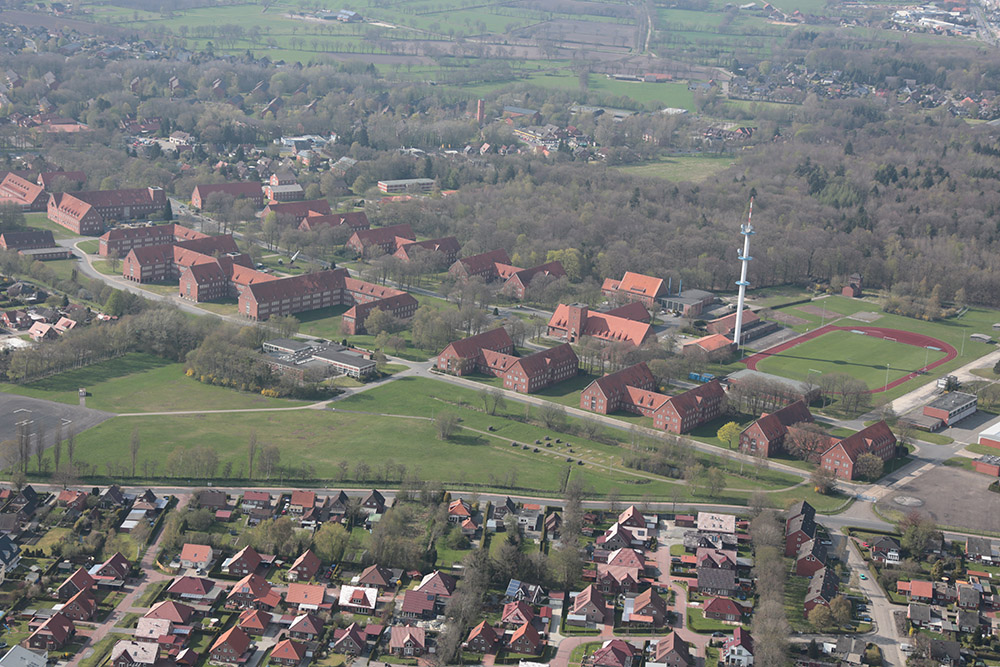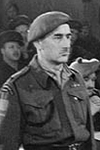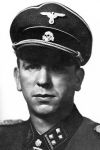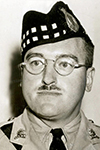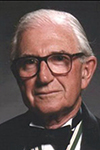Blücher Kaserne (Maple Leaf Barracks)
Aurich became a key naval communications training site during WWII, alongside Mürwick near Flensburg. The 1st Company was established in August 1938, and training for radio operators began that October. Barracks construction continued until 1942.
From 1945 to 1946, the barracks (then relabeled "Maple Leaf Barracks") housed a number of (mainly Canadian) military units:
1945:
HQ 3rd Canadian Infantry Division
7th Canadian Reconnaissance Regiment (17th Duke of York’s Canadian Hussars)
Cameron Highlanders of Ottawa (Machine Gun)
Stormont, Dundas and Glengarry Highlanders
HQ 2nd Canadian Infantry Division
1st Battalion Toronto Scottish (Machine Gun)
HQ 6th Canadian Infantry Brigade
32nd Light Anti-Aircraft Regiment RA
Les Fusiliers Mont Royal
Queens Own Cameron Highlanders of Canada
South Saskatchewan Regiment
3rd Battalion Cameron Highlanders of Ottawa (Machine Gun)
4th Battalion Canadian Scottish Regiment
1945-1946:
2nd/7th Canadian Infantry Brigade
4th Battalion Royal Winnipeg Rifles
4th Battalion Royal Regina Rifles
4th Battalion Queen’s Own Rifles of Canada
356 (Independent) Searchlight Battery (Moonlight) RA
C Squadron 2nd/7th Reconnaissance Regiment (17th Duke of York’s Royal Canadian Hussars)
1946:
6th Battalion Cameronians (Scottish Rifles)
4th/5th Battalion Royal Scots Fusiliers
HQ Royal Artillery 7th Armoured Division
21st Anti-Tank Regiment RA
Between December 1945 and January 1946, the barracks were site of the trial of SS officer Kurt Meyer, who was subsequently sentenced to death for his role in the murder of Canadian POW's in June, 1944. His sentence was later commuted to life imprisonment.
After WWII, the barracks housed displaced persons under the International Refugee Organization. Despite local opposition, the camp opened in 1950 with a capacity of 2,500. Aurich’s population had nearly doubled since 1939, and the barracks helped ease housing shortages.
Following unrest in East Germany, Aurich became a major transit camp for refugees, peaking at 4,200 in late 1957. Churches provided support, and a chapel and bell tower were built for worship. By mid-1959, refugee numbers had dropped sharply.
The Aurich barracks rejoined the Bundeswehr in 1959. Today, only a few military functions remain: a technical platoon for Brockzetel radar, a career center, an ammunition depot in Tannenhausen, and a reservist liaison command.
Do you have more information about this location? Inform us!
Source
- Text: TracesofWar
- Photos: Alchemist-hp
- Geschichte der Blücher-Kaserne
- BAOR Locations
Nearby
Monument
- Memorial Synagogue Aurich - Aurich
- Franco-Prussian War Memorial Aurich - Aurich
- War Memorial Haxtum - Haxtum
